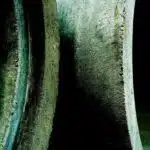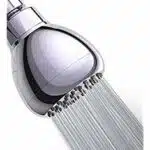As a seasoned maintenance technician, I have witnessed firsthand the damage that clogged drains can cause. Blocked drains can lead to water overflow and potential flooding, causing damage to your property and disrupting your daily routine. To avoid such situations, it is imperative that you maintain your drains regularly to prevent blockages from occurring.
Flushing your drain is one of the most effective ways to keep it in good condition. Flushing helps remove debris and buildup that may be causing blockages or slowing down the flow of water through your pipes. In this article, we will explore how to flush a drain for maintenance and provide you with practical tips on how to keep your drains flowing smoothly. By implementing these tips, you can save yourself time and money while ensuring that your plumbing stays in top condition for years to come.
Understanding The Importance Of Drain Maintenance
Drain maintenance is akin to a regular check-up at the doctor’s office. Like how doctors advise their patients to visit them periodically, plumbers and maintenance technicians recommend that homeowners perform routine drain maintenance. Regular drain maintenance is crucial because it helps prevent clogs from forming and keeps the pipes flowing smoothly. Neglecting drain maintenance will lead to clogged drains, which can be an utter nightmare. Clogged drains can cause water damage, foul odors, and even health hazards.
One of the most common causes of clogged drains is improper disposal of waste materials. People often throw things down the sink or toilet without considering the consequences. Items like cooking grease, food scraps, coffee grounds, kitty litter, paper towels, and feminine hygiene products are notorious for causing drain blockages. Over time these items accumulate in the pipes and cause clogs.
Another common cause of clogged drains is a lack of proper usage techniques. The use of too much toilet paper or flushing non-soluble items down the toilet are examples of poor usage techniques that can cause clogs. Additionally, using chemical-based cleaners may seem like a quick fix for clearing out slow-moving drains but they can also corrode pipes over time.
Having regular drain maintenance is vital for preventing blockages from forming in your pipes. In addition to saving you money on repairs, it also ensures that your home remains clean and healthy. By understanding what causes drainage problems and taking preventative measures against them, you can avoid future headaches with clogged pipes. Now let’s take a look at some signs that indicate when it’s time to call a professional plumber or technician for help with clearing out your clogged drain.
Signs Of A Clogged Drain
Proper maintenance of your drains is crucial to the overall health of your plumbing system. Neglecting this aspect can result in a clogged drain, which can lead to costly repairs and inconveniences. In the previous section, we discussed the importance of drain maintenance. In this section, we will explore common causes of a clogged drain and some DIY solutions.
One of the most common causes of a clogged drain is the buildup of grease and oil. When you pour these substances down your sink or drain, they tend to solidify in cold water pipes, making it difficult for water to flow through them. Another cause is hair accumulation in bathroom drains. Hair can easily get caught up in the drainpipes, leading to blockages over time.
Fortunately, there are some DIY solutions that you can try before calling a professional plumber. For instance, you can use a plunger to dislodge debris that may be causing the blockage. Additionally, baking soda and vinegar can help break down any buildup within your pipes. Pouring hot water down the drain after using these two substances can also help flush out any remaining debris.
In conclusion, proper maintenance of your drains is essential in avoiding plumbing issues such as a clogged drain. Common causes include grease and oil build-up as well as hair accumulation in drains. However, there are simple DIY solutions to address these issues without having to call a professional plumber immediately. In the subsequent section, we will look at tools you will need for flushing your drain effectively.
Tools You Will Need For Flushing Your Drain
Before beginning the process of flushing your drain, it is essential to have all necessary tools on hand. Some of these tools include a plunger, drain snake, bucket, rubber gloves, and safety goggles. Each of these tools serves a specific purpose in ensuring that the flushing process is conducted safely and effectively.
In addition to having essential tools at your disposal, it is also critical to take necessary safety precautions when flushing your drain. This includes wearing protective gear such as rubber gloves and safety goggles to avoid exposure to harmful chemicals that may be present in the drain. It is also important to ensure that the area around the drain is clear of any obstructions or debris that may cause accidents.
Taking these essential measures will go a long way in ensuring that the flushing process goes smoothly without any hiccups or mishaps. In summary, having all necessary tools and taking appropriate safety precautions should be top priorities when preparing to flush your drain for maintenance purposes. The next section will focus on how best to prepare your drain for flushing to achieve optimal results.
Preparing Your Drain For Flushing
Before you flush your drain, it is important to prepare it properly. This will ensure that the flushing process is effective and safe for both you and your plumbing system. First, turn off the water supply to the area where the drain is located. This will prevent any excess water from flowing into the drain during the flushing process. Next, remove any debris or objects from around the drain that may obstruct the flow of water.
After preparing your drain, it’s time to begin flushing. But before you do so, it’s important to understand the benefits of flushing and safety precautions you should take. Flushing your drain periodically can help prevent clogs and buildup in your pipes, which can lead to costly repairs down the line. Additionally, flushing can improve overall drainage efficiency and extend the lifespan of your plumbing system.
To ensure a safe flushing process, wear protective gloves and eye gear while handling any chemicals or tools used during flushing. Avoid using harsh chemicals that could damage your pipes or harm the environment. Instead, opt for natural alternatives such as vinegar or baking soda mixed with hot water.
In summary, preparing your drain before flushing is crucial for a successful process. Understanding the benefits of flushing and taking necessary safety precautions ensures a safe experience for both you and your plumbing system. In our next section, we’ll discuss how to flush your drain with hot water to effectively remove any buildup in your pipes.
Flushing Your Drain With Hot Water
Using boiling water is one of the simplest ways to flush your drain. Boil a pot of water and pour it slowly down the drain. The hot water will help dissolve and loosen any build-up that may be causing a clog in your drain. Be careful not to splash the hot water on yourself or any nearby surfaces.
Another option for flushing your drain is using vinegar and baking soda. Start by pouring 1/2 cup of baking soda down the drain, followed by 1/2 cup of vinegar. Cover the drain with a plug or rag to keep the mixture from escaping. Wait for five minutes, then flush the mixture down with hot water.
The benefits of using hot water to flush your drain are numerous. First, it’s an inexpensive and easy solution that doesn’t require any special tools or chemicals. Second, it’s an environmentally friendly way to maintain your plumbing system without harming aquatic life or contaminating groundwater sources. Finally, regular use of hot water can help prevent future clogs by breaking down food particles, grease, and soap scum before they have a chance to accumulate in your pipes.
Transition: While boiling water is effective at flushing your drain, combining vinegar and baking soda can be even more powerful. Here’s how to do it: .
Using Baking Soda And Vinegar To Flush Your Drain
- To flush a drain using baking soda and vinegar, it is important to first ensure the drain is properly prepared for the procedure.
- The drain should be cleared of any existing clogs and cleaned of any dirt or debris prior to pouring baking soda and vinegar down the drain.
- Once the drain is prepared, mix a 1/2 cup of baking soda with 1/2 cup of white vinegar in a bowl.
- Once mixed, slowly pour the solution down the drain, allowing it to sit for 5 to 10 minutes before running hot water down the drain for a few minutes.
Preparing The Drain
As a plumber, it’s crucial to prepare the drain before flushing it. The first step is removing any debris from the drain opening. This includes hair, soap scum, and other materials that may have accumulated over time. A small brush or wire hanger can be used to gently remove these materials, taking care not to damage the drain or any fixtures around it.
The next step in preparing the drain is checking for leaks. Before introducing any liquid into the drain, it’s important to ensure that there are no existing leaks or damage to the pipes. This can be done by inspecting the area around the drain for any signs of moisture or water stains. Additionally, running water through the drain and observing for any leaks can help identify potential issues before they become major problems.
By properly preparing your drain before flushing it with baking soda and vinegar, you can ensure that your plumbing system stays functioning smoothly for years to come. Removing debris and checking for leaks are simple yet effective steps that every homeowner should take as part of their regular maintenance routine. By doing so, you’ll save yourself time and money in costly repairs down the line.
Mixing The Baking Soda And Vinegar
Once you have prepared your drain by removing debris and checking for leaks, it’s time to mix the baking soda and vinegar. This step is crucial in ensuring that your plumbing system remains clean and free from clogs. Baking soda and vinegar work together to dissolve any buildup of grease, hair, soap scum, or other materials that may be causing blockages.
To mix the baking soda and vinegar solution, start by pouring half a cup of baking soda down the drain. Then follow it up with one cup of vinegar. The mixture will create a fizzing reaction that helps to break down any build-up in the pipes. After a few minutes, flush the drain with hot water to wash away any remaining debris.
While baking soda is an effective ingredient for cleaning drains, there are alternatives you can use if you don’t have any on hand. For instance, lemon juice can be used instead of vinegar as it contains citric acid which can help dissolve debris in your drain. Additionally, salt can be mixed with hot water and poured into the drain to help melt away grease and other stubborn substances. Regardless of which method you choose, regular maintenance with natural cleaners like these can help keep your plumbing system working efficiently while providing benefits such as being eco-friendly and safer for household use compared to harsh chemicals.
The Benefits Of Using Enzymatic Drain Cleaners
As the old adage goes, “prevention is better than cure”. When it comes to maintaining your drains, using enzymatic drain cleaners can be an effective preventative measure. These cleaners are made up of natural bacteria and enzymes that break down organic materials such as grease, oil, and food particles that accumulate in your pipes over time.
Here are some benefits of using enzymatic drain cleaners:
- They are eco-friendly and safe for use around children and pets.
- They can help prevent clogs from forming in the first place, saving you money on costly plumbing repairs.
- They provide a long-lasting solution by breaking down buildup in your pipes over time.
- They are easy to use – simply pour the recommended amount down your drain and let it work its magic.
In terms of effectiveness, enzymatic drain cleaners can be a great option for maintaining your drains. However, they may not be suitable for more serious blockages or clogs. If you’re experiencing slow draining or foul odors coming from your pipes, it may be time to call in a professional plumber for further assistance.
Next up: flushing your drain with a plunger. This simple yet effective method is another way to maintain the health of your drains and keep them free from clogs.
Flushing Your Drain With A Plunger
To flush your drain with a plunger, first, make sure that you have the right type of plunger. A cup plunger is best for sinks, while a flange plunger is better suited for toilets. Next, fill the sink or toilet with enough water to cover the head of the plunger. Place the plunger over the drain and press down firmly to create a seal. Then, push and pull the plunger up and down in rapid succession to create suction and pressure that will dislodge any clogs.
When using the plunger technique, there are several common mistakes that people often make. One such mistake is not creating a proper seal between the plunger and drain. This can result in ineffective plunging and could even cause water to splash out of the sink or toilet bowl. Another mistake is not using enough force when plunging. It’s important to push down on the plunger with enough pressure to create suction and then pull up quickly to create pressure.
If you find that after several attempts at plunging your drain, it still isn’t flowing freely, it may be time to call in a professional plumber. They have specialized equipment that can effectively clear even the most stubborn clogs without causing damage to your pipes. Additionally, they can identify any underlying issues that may be contributing to recurring clogs so that you can take steps to prevent them from happening again in the future.
When To Call A Professional
After attempting to flush your drain with a plunger, if you still notice that water is not draining properly or there is an unpleasant odor coming from the drain, it may be time to call a professional. While attempting to perform maintenance on your drain may seem like a simple task, it can quickly turn into a larger problem if not done correctly. A clogged drain can cause significant damage to your plumbing system and even result in costly repairs.
One of the signs of severe clogs is when water backs up in multiple drains throughout your home. This issue indicates that there may be a blockage in the main sewer line or vent stack. Attempting to fix this issue without proper training and equipment can lead to further damage and more significant problems. Additionally, if you notice any strange noises coming from your pipes or have noticed sewage backups in your home, it’s essential to call a professional immediately.
When it comes to addressing severe clogs or other plumbing issues, it’s best to leave it up to the professionals. A licensed plumber or maintenance technician will have the necessary training and equipment needed to diagnose and address any issues effectively. By calling in an expert at the first sign of trouble, you can avoid potential damage and costly repairs down the line.
Preventative measures for avoiding clogs include regularly flushing drains with hot water, using drain covers to catch hair and debris, avoiding pouring grease down drains, and being mindful of what goes down your garbage disposal. By taking these simple steps, you can help keep your plumbing system running smoothly and prevent future clogs from occurring.
Preventative Measures For Avoiding Clogs
Regular drain cleaning is an important part of maintaining a clog-free drain. It is recommended to use a specialized drain cleaner to flush away any build-up that may have occurred inside of the pipes and clear away any foreign objects. Proper disposal of waste is also essential, as items such as paper towels, facial tissue, and other items may become lodged inside the pipes. Grease build-up in the pipes should be avoided by not disposing of grease or oils in the drain and regularly cleaning the drain with a degreaser. Additionally, strainers or filters should be installed in order to catch any debris. Lastly, it is recommended to have the pipes inspected by a plumber annually in order to detect any potential problems.
Regular Drain Cleaning
When it comes to maintaining a functioning plumbing system, regular drain cleaning is an important preventative measure that should never be overlooked. DIY drain cleaning can be done at home with the use of natural or chemical cleaners, but for a more thorough job, it’s always best to hire the services of a professional plumber or maintenance technician. Regular drain cleaning helps to prevent clogs and backups, which can lead to costly repairs and inconveniences.
Preventative measures for avoiding clogs include being mindful of what goes down your drains. Avoid pouring grease, oil, coffee grounds, hair, and other debris down your sink or shower drains. These items can accumulate over time and cause stubborn clogs that are difficult to remove. Installing drain screens and strainers in your sinks and showers can also help prevent debris from entering your pipes.
In addition to preventing clogs, regular drain cleaning can improve the overall performance of your plumbing system. It helps remove any built-up residue on the walls of your pipes that may impede water flow or cause foul odors. By taking these preventative measures and scheduling regular drain cleanings with a professional plumber or maintenance technician, you can ensure that your plumbing system remains in top working condition for years to come.
Proper Disposal Of Waste
Another important preventative measure for avoiding clogs is proper waste disposal. As a plumber or maintenance technician, it is our duty to inform customers about the environmental impact of improper waste disposal. Items such as paper towels, sanitary products, and wipes should never be flushed down the toilet as they can cause blockages in sewer systems and harm the environment. It is important to only flush human waste and toilet paper down the toilet.
Proper waste disposal also applies to kitchen sink drains. Pouring grease or oil down the drain may seem harmless at first, but these substances can solidify and cause stubborn clogs in your pipes. Instead, pour used cooking oil into a container and dispose of it in the trash. Similarly, leftover food scraps should be disposed of in the garbage rather than being washed down the drain.
In addition to preventing clogs and protecting the environment, proper waste disposal can also save you money on plumbing repairs in the long run. By being mindful of what goes down your drains and properly disposing of waste, you can prevent costly clogs from forming in your pipes. As a responsible homeowner, it is important to take these preventative measures seriously and make them a part of your regular routine.
Avoiding Grease Buildup
As a plumber or maintenance technician, it is essential to educate clients about the best practices for avoiding clogs. Regular maintenance and proper disposal are two critical components of preventative measures for keeping their pipes in good condition. Another vital aspect of preventing clogs is avoiding grease buildup.
Grease buildup can cause significant problems in plumbing systems if not adequately addressed. When grease solidifies, it creates stubborn blockages that can lead to backups and even pipe bursts. Therefore, it is crucial to avoid pouring cooking oil and leftover food scraps down the drain. Instead, dispose of these materials in the trash bin. Furthermore, regular maintenance such as cleaning your sink strainer can help prevent grease accumulation in your pipes.
Preventing clogs caused by grease buildup can save homeowners time and money on costly plumbing repairs. By incorporating proper disposal habits into their routine and regularly maintaining their plumbing system, they can avoid potential disasters caused by clogged pipes. As a responsible homeowner, taking these preventative measures seriously should be a priority to ensure the longevity of their plumbing system and protect against unnecessary expenses down the line.
Cleaning Your Drain Filters
As a maintenance technician, I recommend cleaning your drain filters on a regular basis to prevent blockages and keep your plumbing system in good working order. The frequency of cleaning will depend on the type of filter you have installed and the amount of usage it receives. Some filters need to be cleaned every few months while others can go up to a year before needing attention.
There are different types of drain filters available, including mesh screens and strainers, which are designed to catch debris such as hair or food particles. These filters can be easily removed and cleaned by hand with soap and water. Other filters may require more specialized tools or techniques, such as backwashing or chemical treatments. It’s important to follow the manufacturer’s instructions when cleaning your specific filter type to avoid damaging it or voiding any warranties.
Regular maintenance of your drains is essential for preventing clogs and backups that can cause costly damage to your plumbing system. By keeping up with cleaning frequency and using the appropriate filter types, you can minimize the risk of blockages and ensure that wastewater flows smoothly through your pipes. In the next section, we’ll discuss how to create a regular maintenance schedule for your drains so you can stay on top of this important task.
Regular Maintenance Schedule For Your Drains
Objection: “Why do I need to schedule drain maintenance?”
Regular maintenance is critical for your drains to function correctly. If you neglect your drains, you may experience various issues such as slow drainage or blockages. The amount of time that passes between each cleaning depends on the usage of the drain and the type of waste it handles. Homes with a large number of people may require more frequent cleaning than those with fewer people.
Scheduling frequency and best time to flush
To maintain proper drainage in your home, we recommend scheduling regular maintenance every six months. During these cleanings, our plumbers will inspect your pipes, identify potential problems before they become more severe, and remove any buildup that could cause blockages. The best time to flush your drains is when you notice water draining slowly or hear gurgling sounds coming from them. These are signs that a blockage is forming, and prompt action can prevent further damage.
Transition: Now that we have established the importance of scheduling regular drain maintenance let’s talk about some DIY drain cleaning solutions for minor clogs or maintenance between professional cleanings.
Diy Drain Cleaning Solutions
Maintaining a clear and functional drain is crucial for the proper functioning of your plumbing system. While there are many commercial drain cleaners available in the market, they can be harsh on your pipes and can cause damage over time. To avoid this, you may want to consider using natural drain cleaners or homemade drain solutions.
One of the most effective natural drain cleaners is baking soda and vinegar. Simply pour half a cup of baking soda down the drain followed by half a cup of white vinegar. Cover the drain with a cloth to prevent the mixture from coming back up and let it sit for 30 minutes before flushing with hot water. This solution helps dissolve any buildup in your pipes and keeps them clean.
Another homemade solution that works well is a mixture of salt, baking soda, and cream of tartar. Mix half a cup each of salt and baking soda with one tablespoon of cream of tartar. Pour this mixture down the drain followed by boiling water. This will help remove any buildup and keep your drains smelling fresh.
By using natural drain cleaners or homemade solutions, you not only maintain the functionality of your plumbing system but also avoid harmful chemicals that can pollute the environment. In addition to these solutions, there are other eco-friendly tips you can follow to keep your drains in good condition.
Eco-Friendly Drain Maintenance Tips
Just like a healthy heart keeps the body in good shape, a well-maintained drain system keeps homes functioning smoothly. As plumbing experts, we understand the importance of keeping drains clean and well-maintained. One way to do this is by using eco-friendly drain cleaners that are safe for both your family and the environment.
Natural drain maintenance techniques are becoming increasingly popular due to their effectiveness without the use of harsh chemicals. For instance, you can pour boiling water down your drain to melt away grease and soap scum. Additionally, baking soda mixed with vinegar works wonders in breaking down clogs and deodorizing drains. You can also use a plunger to dislodge stubborn blockages.
It’s essential to keep your drains running smoothly as it ensures that wastewater flows out efficiently, preventing backups and foul odors. By adopting natural maintenance techniques and using eco-friendly products, you’re not only keeping your home clean but also helping to protect our planet from harmful chemicals. In the next section, we’ll discuss some tips on how you can prevent clogs from forming in your drains to avoid costly repairs in the future.
Conclusion: Keep Your Drains Running Smoothly
After implementing eco-friendly drain maintenance tips, it’s important to ensure that your drains are running smoothly by occasionally flushing them out. Flushing your drain involves pouring hot water down the drain or using a mixture of baking soda and vinegar to break down any buildup. This is an easy and effective way to maintain your drains and prevent clogs from forming.
However, if you notice that your drains are still not running smoothly after flushing them out, it may be time to consider using drain cleaning products. These products work by dissolving any buildup or blockages in your pipes, allowing water to flow freely through them again. It’s important to follow the instructions on the product carefully and use protective gear such as gloves and eyewear when handling these chemicals.
If you’re not comfortable using drain cleaning products yourself, it’s recommended that you seek professional drain cleaning services instead. A professional technician will have the necessary tools and expertise to thoroughly clean out your pipes without causing damage or harm to yourself or the environment. Regular maintenance from a professional can also help prevent major plumbing issues from arising in the future, saving you time and money in the long run.
By regularly maintaining your drains with eco-friendly tips and taking action when necessary with either DIY methods or professional assistance, you can keep your plumbing system running smoothly for years to come. Remember that prevention is key when it comes to keeping your home’s plumbing system functioning properly!
Conclusion
Drain maintenance is a crucial aspect of keeping your plumbing system functioning properly. Neglecting your drains can lead to clogs, slow drainage, and even sewage backups. As a maintenance technician or plumber, it’s essential to understand the importance of drain maintenance and how to flush a drain.
When it comes to flushing your drain, there are several tools you will need, including hot water and cleaning solutions. Before you begin the process, prepare your drain by removing any debris or buildup that may be present. Once your drain is ready, flush it with hot water to remove any buildup that may be causing clogs or slow drainage.
Regular maintenance is key when it comes to keeping your drains running smoothly. Create a schedule for routine cleaning and maintenance to ensure that your plumbing system stays in good working order. Additionally, consider using eco-friendly cleaning solutions and techniques that are safer for the environment.
In conclusion, as a plumber or maintenance technician, it is crucial to emphasize the significance of maintaining clean and efficient drains. The symbol of flowing water represents the smooth operation of the pipes in our homes. Neglecting our drainage systems could lead to blockages and other issues affecting our daily lives. Therefore, taking simple steps like regularly flushing our drains with hot water and using eco-friendly solutions can keep our plumbing systems healthy while protecting the environment.
Image Credits
- “Chemicals used to process sample in the laboratory of microbiology are diluted with water and then flushed in the drain, Tunis, Tunisia” by Global Environment Facility (GEF) (featured)

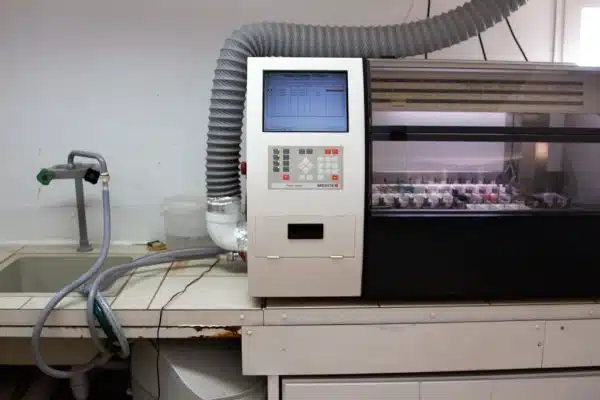
![How To Get Hair Out Of A Bathtub Drain 2 2/365 [Bathtub Drain]](https://green-life.blog/wp-content/uploads/2023/05/cOEu5edpkejq-150x150.jpg.webp)
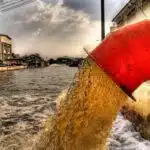


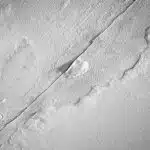

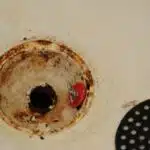


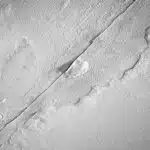




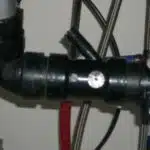
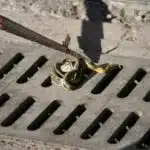
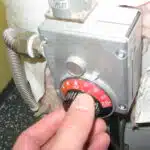
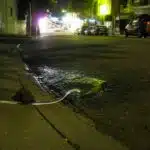

![How To Replace A Bathtub Drain In A Mobile Home 21 2/365 [Bathtub Drain]](https://green-life.blog/wp-content/uploads/2023/05/3ft8KAJsNnjq-150x150.jpg.webp)




